News
Border Realities: A Glimpse Into the Conditions at the Southern Border
As part of our ongoing efforts to support a humane and sustainable immigration system, in January of 2024, we visited the Southern border, along with a group of funders, to witness the process of welcoming new arrivals firsthand. During the trip, we spent time with community organizations whose staff and volunteers work up to 18 hours a day in unbelievable circumstances to provide migrants with as safe and dignified an arrival as possible in the face of a hostile immigration system. Keep reading to learn more about our observations from the tour and the journey taken by those seeking safety and dignity in America.
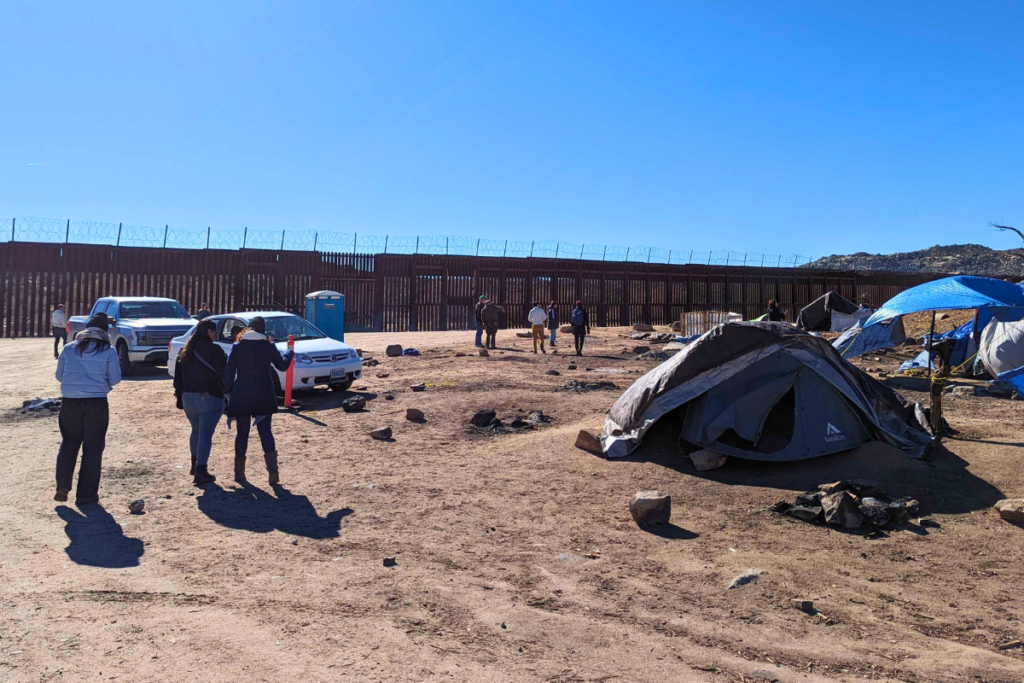
OPEN AIR DETENTION: UNSHELTERED NIGHTS AND UNCERTAIN FUTURE
An hour east of downtown San Diego and an hour west of El Centro, open-air detention sites are the first stopping point for more than 43,000 people entering the United States last year. At the time of our visit, most of the sites had been cleared for a public official or media visit. Still, makeshift tents of discarded lumber and worn tarps dotted the landscape and a lonely fire burned, evidence of people trying to stay warm through temperatures that dip into the teens overnight.
The isolated camp we visited lay in a bleak landscape where Border Patrol is a constant menacing pressure. The migrants forced into these areas are not technically in custody, meaning Border Patrol is not required to provide shelter, water, or food. Yet, they are discouraged in word and deed from leaving these sites. Local community organizations and residents have stepped up to help, serving up to a thousand individuals at a time. These organizations and individuals work tirelessly around the clock to provide food, water, blankets, and sometimes even medical care, for those who need it after their treacherous journey across the border.
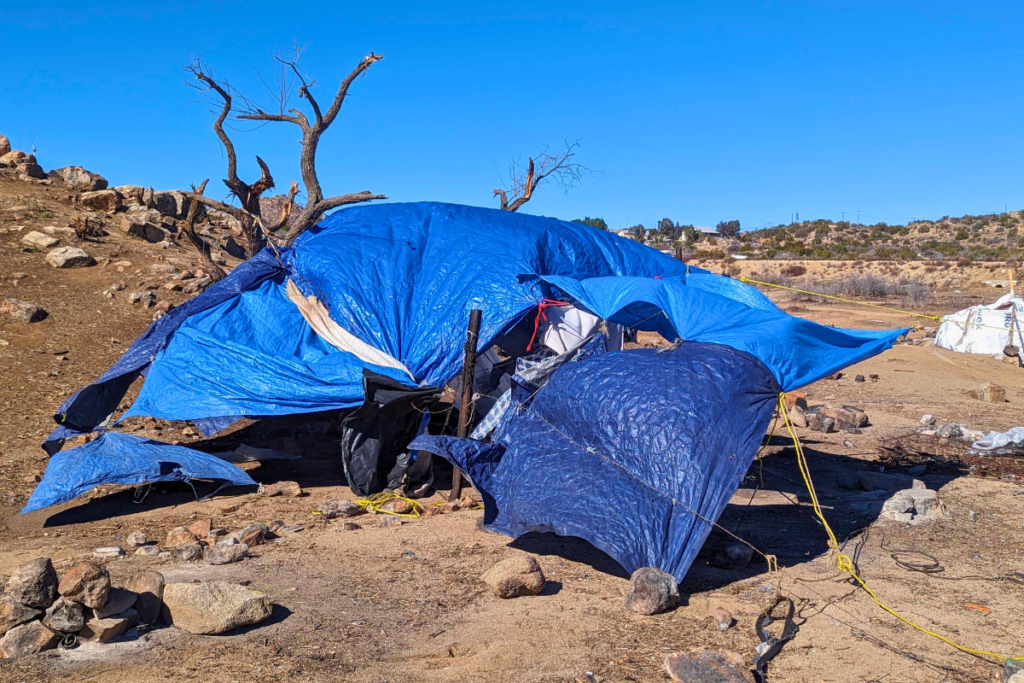
With little knowledge of where they are or what rights they have, the individuals at these sites may remain trapped for anywhere from a few hours to more than a week before they officially engage the asylum system. The support being provided is funded entirely by philanthropy, despite the numerous overlapping jurisdictions and international human rights laws that indicate it is a government responsibility. If you’re wondering how this is legal, community organizations have the same question: in December 2023, an official complaint was filed with Homeland Security, outlining the inhumane conditions. However, conditions have yet to improve.
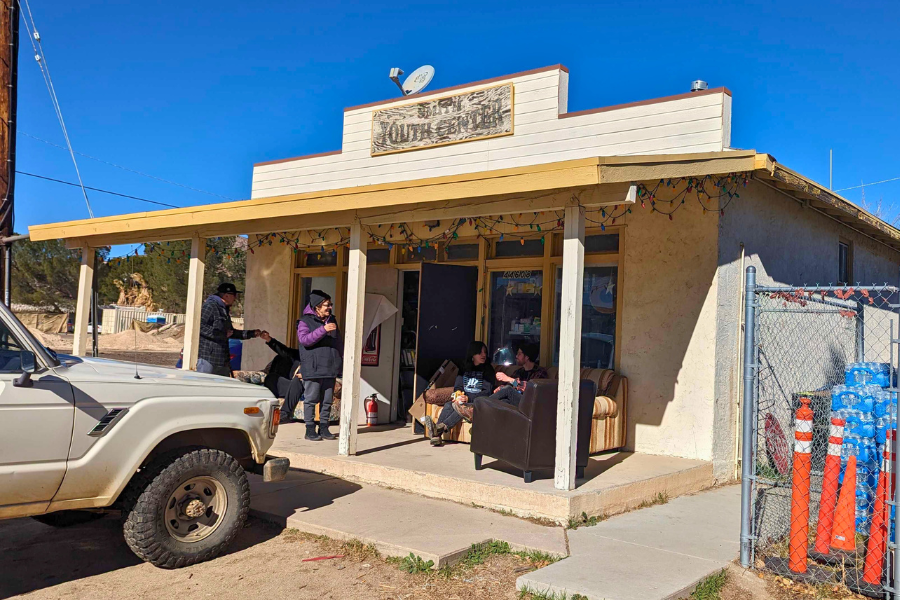
Back in Jacumba, a community with a population of 600, we squeezed into a former youth center playing the role of temporary supply depot and volunteer center. Between shelves packed with essentials from rice to children’s toys, Sam, Flower, Leilanie, Bryce and Adriana talked with us about what it takes to respond to the humanitarian crisis that has become a regular feature of their landscape.
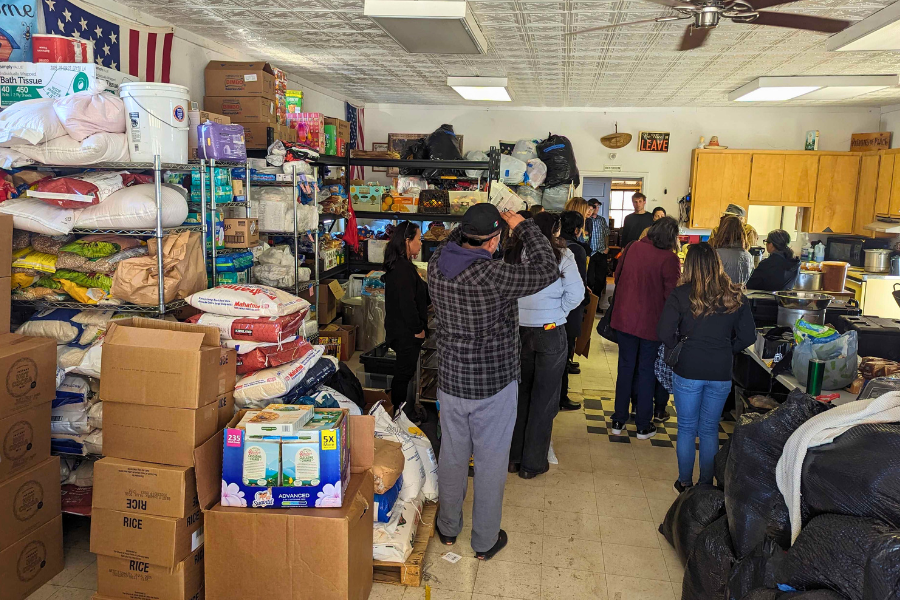
No public funding, be it federal, State, County, or other, has been allocated to ensure safety for those arriving at our side of the border. The response is entirely coordinated by local organizations, including Al Otro Lado, Universidad Popular, American Friends Service Committee, Border Kindness, among other organizations and individuals who spend hours and days committed to the cause.
We even met Ocho, a dog adopted when he arrived in San Ysidro. He was accompanied by a woman who had been volunteering her time for more than six months and was only just recently able to be paid as a part-time response manager, thanks to philanthropic support.
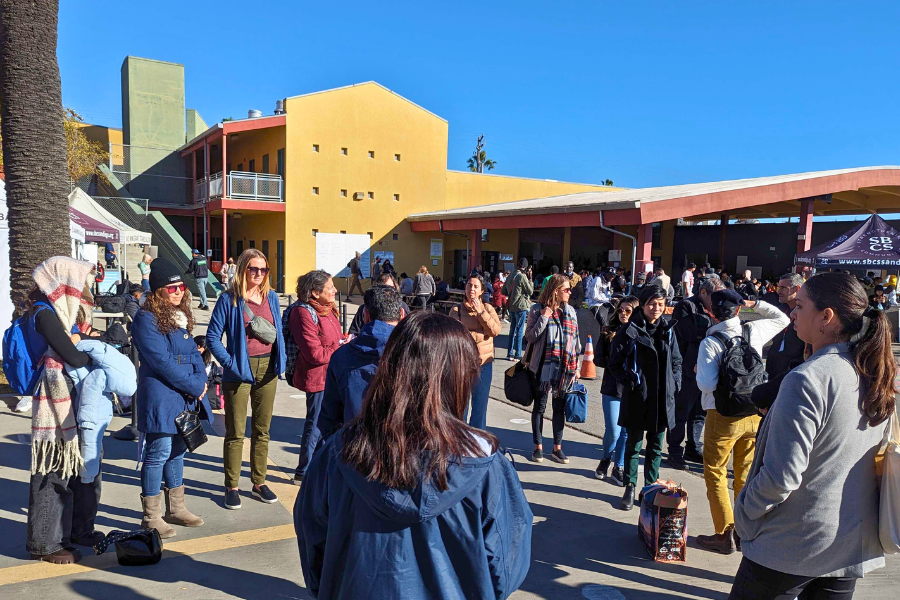
CITY HEIGHTS WELCOME CENTER
Nestled in City Heights, one of the most diverse neighborhoods in the region, San Diego’s sole migrant welcome center stood until recently. At the time of our tour, hundreds of migrants disembarked from a large bus, spreading out to receive hot meals, charge their phones, pick up warm coats, or get help making plane reservations. This welcome center existed to aid the hundreds of immigrants who were previously being released on the streets. A dozen nonprofits were on site to help with family reunification, traveling to meet sponsors across the country, and more. We heard conversations in numerous languages, with staff and volunteers aided by interpreters and Google Translate. Most migrants were excited, buoyed by the support they were receiving and the anticipation of finally reaching their sponsors.
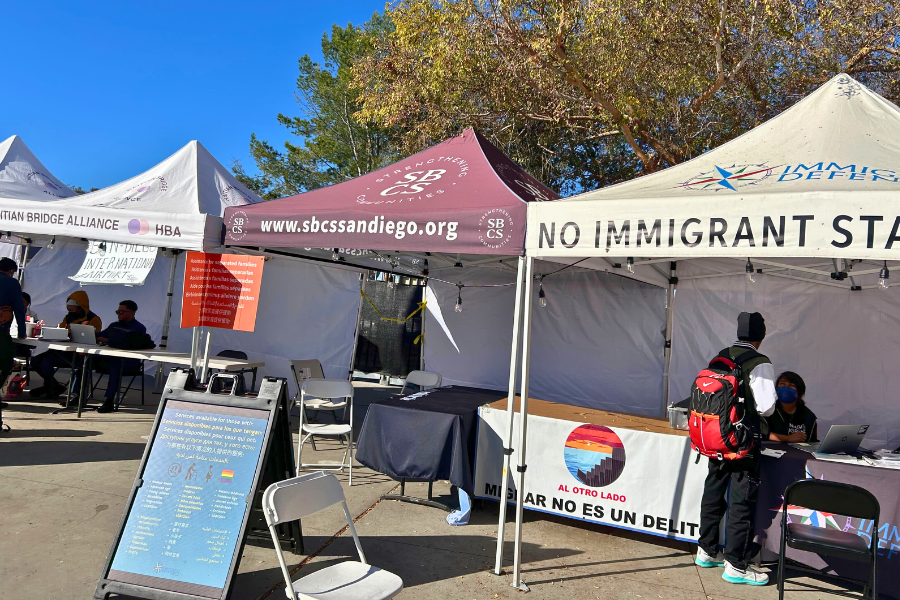
Since opening in October, this welcome center supported over 81,000 migrants. However, today that support no longer exists, and street releases have once again become the status quo. The welcome center was operational thanks to $6 million allocated by the County of San Diego starting in mid-October 2023 for a contract with SBCS to manage the center and provide funds to the dozen or so other nonprofits key to the operation. However, with operating costs of $1.4 million per month, those funds quickly dried up, and without a renewed investment or State or federal funding, the welcome center closed in late February.
As they had in September and October, nonprofits stepped up to help the hundreds of individuals who are now regularly released at a completely unfamiliar location without access to shelter, public restrooms, Wi-Fi, or even benches. Supported by nearly $2 million from philanthropy last Fall before County funds were approved, these organizations continue to operate today in the absence of sustainable financial support.
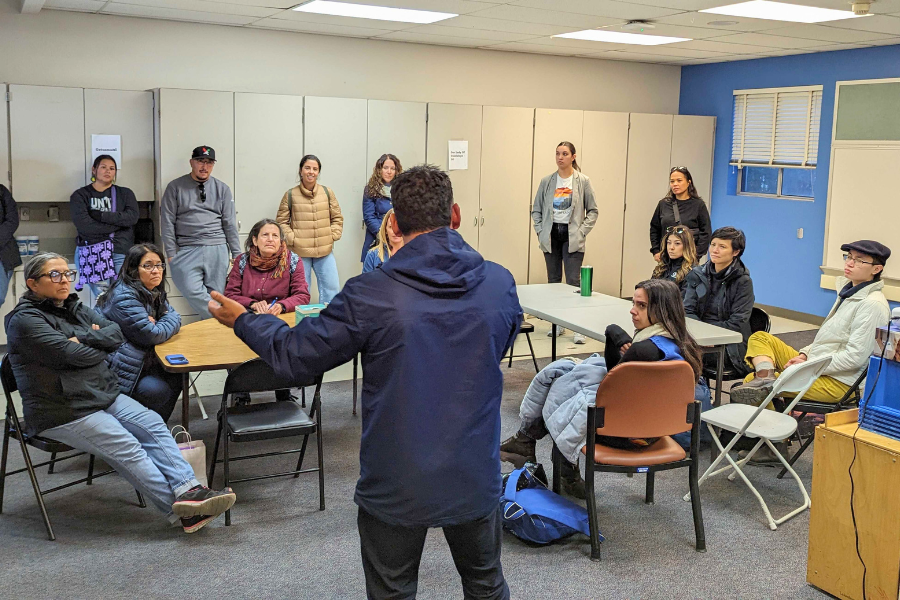
NAVIGATING THE PATH FORWARD: WHAT IS PHILANTHROPY’S ROLE?
Our trip to the border with a dozen foundation staff and individual donors illuminated only a fraction of the journey undertaken by asylum seekers, highlighting the incredible work being done by nonprofits and volunteers. We urgently need a more sustainable, safe, and dignified system for those seeking refuge in the United States. And yet, in the face of a failing federal response and lack of public funds closer to home, there is not currently a clear path to that sustainability.
Join the upcoming Binational Migration Funder Meeting on April 8 to discuss priorities and options for the role philanthropy can play in ensuring dignity and safety for asylum seekers, refugees, and immigrants arriving at our borders.